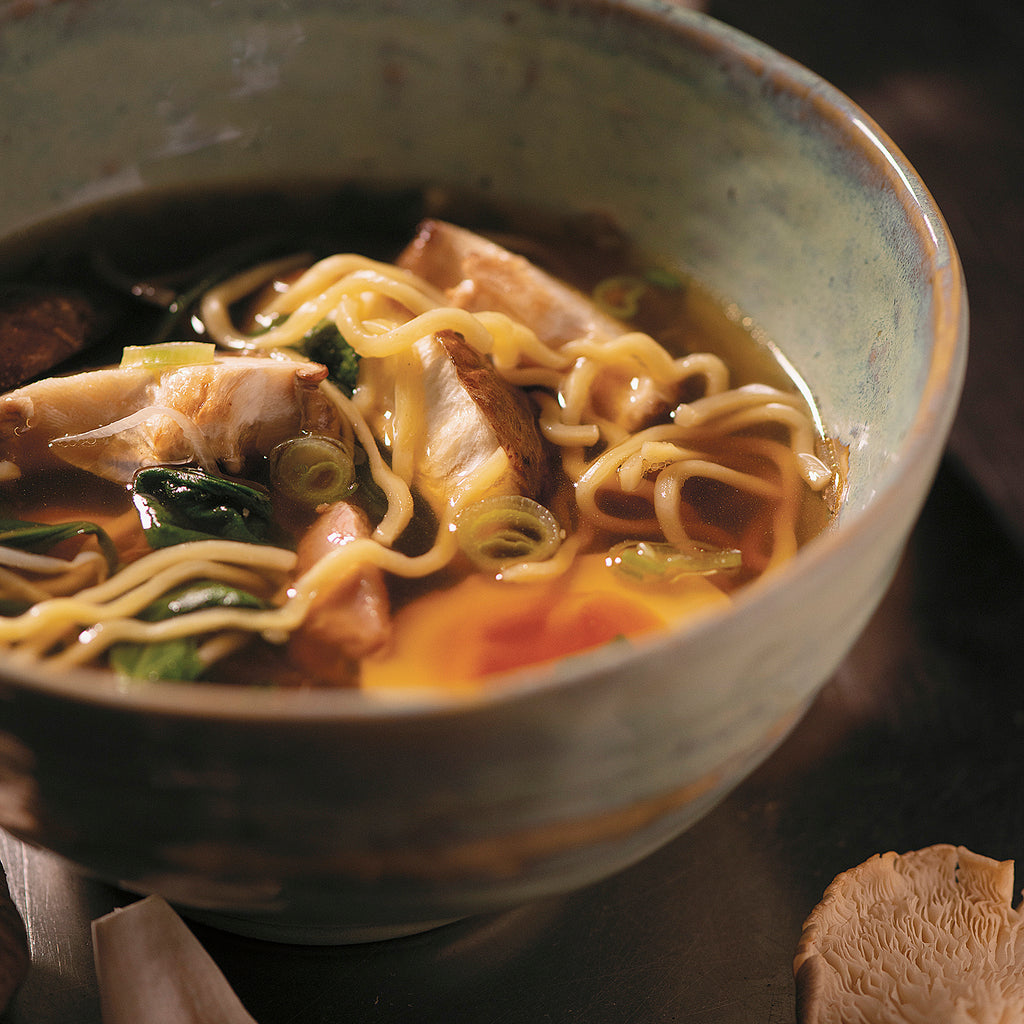Bone broth has been on the rise in recent years. However, the drink is centuries old and was already used routinely in British hospitals in the 19th century to improve the nutritional status of patients. It's fun to see people rediscovering bone broth! To honor tradition, we would like to share the three laws of good bone broth!
"Beef tea may be chosen as an illustration of great nutrient power in sickness." -Florence Nightingale (1820-1920)
A sufficiently long cooking time
A good broth takes time. Not only for releasing the flavors, but especially for extracting the nutrients. The optimal cooking time is somewhere between 12 and 72 hours, depending on the bones used. Ideally, the temperature is kept below the boiling point, specifically between 70 and 98 degrees Celsius. To give you an idea of what a little patience can mean, the table below shows the concentration of a number of amino acids in a long and short drawn bone broth based on chicken.
|
Amino acids |
Long drawn (mg) |
Short drawn (mg) |
|
Glutamine |
3040 |
1100 |
|
Proline |
2960 |
727 |
|
Glycine |
5320 |
1350 |
|
Arginine |
2090 |
512 |
Source. Nourishing Broth by Sally Fallon Morell & Kaayla T. Daniel, PhD.
Quality, quality, quality!
“You get out what you put in” . It makes perfect sense when it comes to bone broth. Bones contain many components that are good for us, but they can also be a storehouse for heavy metals. It is therefore important to monitor the quality carefully.
Organic certification is the first step in the right direction. To obtain this certificate, the producer must comply with a number of guidelines regarding the type of feed and outdoor space offered to the animal. Furthermore, the guidelines also provide instructions regarding accommodation, so that the animals can express their natural behavioral patterns as much as possible.
It is also a good idea to maintain personal contact with the farmer. In this way, the animal's living conditions can be clearly mapped out. Research has shown that when high-quality ingredients are used, contamination with heavy metals is extremely low. The concentration is then equal to that of pure drinking water (= nil).
That leaves you wanting more!
Bone broth should nourish us in the broadest sense of the word. This also means that it should be a moment of enjoyment. To enhance this experience, the taste must be good and then a solid recipe is essential! Searing the pieces of meat in advance, as well as adding some aromatic vegetables such as onion and leek, are some recommendations to provide a richer taste experience.


